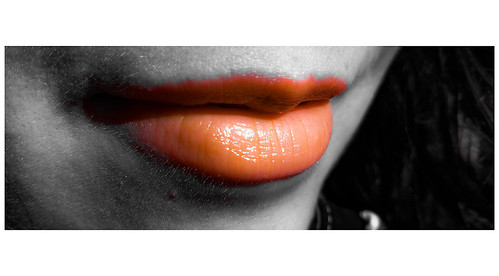B103 cells, a rat neuronal cell line, had been co-contaminated with LV-LC3-GFP and both a LVontrol build or LV-a-syn and subsequently treated with LDN (Determine 10 E). Stages of LC3-GFP signal in the LV-Manage contaminated cells had been not significantly affected on LDN therapy (Figure 10E, F, I). However, amounts of a-syn had been enhanced following LDN treatment method in management cells (Determine 10K, N). In contrast, the effects of UCH-L1 inhibition on ranges of a-syn in vitro ended up regular with those observed in vivo and demonstrate that LDN remedy resulted in a decrease in a-syn (Figure 10M, N) and an enhance in LC3-GFP signal in the cells infected with LV-asyn, this LC3-GFP sign was localized to discrete granular constructions in the mobile. (Determine ten G, H, I). These final results had been confirmed by immunoblot (Figure 10O). Collectively these knowledge suggest that inhibition of UCH-L1 activity induces activation of the autophagy pathway in a-syn tg mice and a-syn above expressing cells but not in non tg mice or controls cells suggestive of a differential result of UCH-L1 modulation beneath pathogenic vs. non-pathogenic circumstances
Inhibition of UCH-L1 exercise does not impact hippocampal mRNA expression levels of a-syn. Overall RNA was extracted from hippocampal tissues of non tg and a-syn tg mice handled with or without having LDN, and analyzed by true-time PCR for expression of murine a-syn (ma-syn) (A) and human a-syn (ha-syn) (B). a-syn mRNA expression ranges for all teams ended up normalized to those in manage non tg mice. N = six mice for each group. Suggests a significant difference among ha-syn mRNA ranges in untreated non tg and a-syn tg mice, P,.0001. Suggest values 6 SEM are proven.
Cognitive drop and dementia are amongst the most frequent nonmotor adjustments in neurodegenerative ailments these kinds of as PD and DLB and are frequently connected with intraneuronal a-syn deposits which lead to synaptic dysfunction and degeneration [forty,forty one]. Elevations in a-syn protein levels lead to  the pathogenesis noticed in PD, as gene duplications/triplications of the a-syn gene have been shown to lead to familial PD or parkinsonism [42,forty three]. In the current study, we set out to examine the relationship between UCH-L1 and a-syn as these proteins are implicated in PD and have been formerly shown to interact [eight]. . In undertaking so, we investigated mechanisms that could perhaps guide to neuronal dysfunction and decline and in the end cognitive decrease and dementia. Listed here we display that inhibition of UCH-L1 action in non tg mice qualified prospects to an enhance in a-syn protein expression stages. In the same way, inhibition of UCH-L1 exercise in main hippocampal neurons expressing endogenous amounts of a-syn led to an improve in the size and variety of presynaptic a-syn clusters. In distinction, blocking UCH-L1 activity in a-syn transgenic mice or neurons that in excess of categorical a-syn resulted in a decrease in7851497 a-syn levels that correlated with its increased clearance from synapses. Additionally, the observed alterations in a-syn ranges ended up not due to modifications in its mRNA expression stages or neuron cell density but correlated with dysregulation of the autophagy pathway in a-syn transgenic mice. Our knowledge stage to differential outcomes of UCH-L1 inhibition in the context of normal and pathologic situations, in that blocking UCHL1 exercise sales opportunities to opposing effects on a-syn distribution and protein stages in cells that specific endogenous a-syn stages vs. those that more than express the protein. The exact mother nature of, and mechanisms underlying, how UCHL1 might modulate a-syn are not clear. 1 probability may possibly include a GDC-0941 direct interaction. a-syn is a primarily pra-synaptic protein although UCH-L1 is localized the two in the pre and postsynaptic areas [8,seventeen]. Apparently, in a preceding study [seventeen] we have revealed that the effects of LDN had been preferentially on postsynaptic proteins these kinds of as PSD-ninety five.
the pathogenesis noticed in PD, as gene duplications/triplications of the a-syn gene have been shown to lead to familial PD or parkinsonism [42,forty three]. In the current study, we set out to examine the relationship between UCH-L1 and a-syn as these proteins are implicated in PD and have been formerly shown to interact [eight]. . In undertaking so, we investigated mechanisms that could perhaps guide to neuronal dysfunction and decline and in the end cognitive decrease and dementia. Listed here we display that inhibition of UCH-L1 action in non tg mice qualified prospects to an enhance in a-syn protein expression stages. In the same way, inhibition of UCH-L1 exercise in main hippocampal neurons expressing endogenous amounts of a-syn led to an improve in the size and variety of presynaptic a-syn clusters. In distinction, blocking UCH-L1 activity in a-syn transgenic mice or neurons that in excess of categorical a-syn resulted in a decrease in7851497 a-syn levels that correlated with its increased clearance from synapses. Additionally, the observed alterations in a-syn ranges ended up not due to modifications in its mRNA expression stages or neuron cell density but correlated with dysregulation of the autophagy pathway in a-syn transgenic mice. Our knowledge stage to differential outcomes of UCH-L1 inhibition in the context of normal and pathologic situations, in that blocking UCHL1 exercise sales opportunities to opposing effects on a-syn distribution and protein stages in cells that specific endogenous a-syn stages vs. those that more than express the protein. The exact mother nature of, and mechanisms underlying, how UCHL1 might modulate a-syn are not clear. 1 probability may possibly include a GDC-0941 direct interaction. a-syn is a primarily pra-synaptic protein although UCH-L1 is localized the two in the pre and postsynaptic areas [8,seventeen]. Apparently, in a preceding study [seventeen] we have revealed that the effects of LDN had been preferentially on postsynaptic proteins these kinds of as PSD-ninety five.